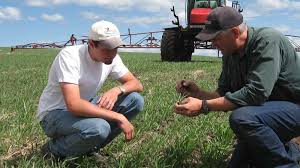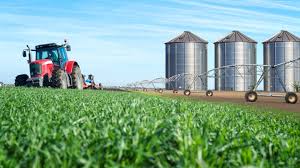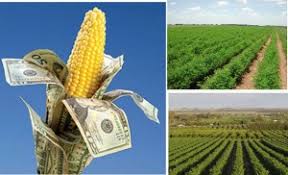This article discussed the fundamental concepts in agricultural production economics, having previously discussed the meaning of agricultural economics, production economics, and agricultural production economics.
Understanding these concepts is critical for grasping the full scope of this specialized branch of economics. This article will explain key terms such as production, types of production, factors of production, and efficiency.
Read Also: Vent Pecking in Poultry and How to Control them
Concept of Production

Production is the process through which goods and services are transformed into other goods. The resources used in the process, known as inputs, factors, or resources, are converted into products, outputs, or yield in the case of crops.
A. Types of Production
Production can be classified into three main types:
1. Primary Production: This involves all branches of production that may not be immediately consumed but are used for further production, such as cassava farming, mining, and quarrying.
2. Secondary Production: This consists of manufacturing and construction activities where raw materials from primary production are transformed into finished goods.
3. Tertiary Production: This involves the provision of direct services, including the distribution of goods and services at each production stage to the final consumer.
B. Factors of Production
Factors of production refer to the resources employed in producing a product. These inputs include land, labor, capital, and organization.
1. Land: Land includes all natural resources such as farmland, mineral deposits, and fishing grounds. It is unique in that:
i It is fixed in supply,
ii. It has no cost of production,
iii. It varies in quantity and quality.
1. Capital: Capital consists of resources like buildings, machinery, raw materials, and transportation means, which aid in producing other goods.
2. Labour: Labour represents the human effort involved in production. The supply of labor depends on the country’s total population, the proportion of the population available for work, and the number of hours worked per person annually.
3. Entrepreneur: The entrepreneur is the individual or manager responsible for making decisions about production methods, organizing resources, and bearing the risks associated with production. Their role includes deciding what to produce and how much to produce, along with organizing the work of others.
Read Also: Best Ways to Prevent and Control Coccidiosis among Poultry Birds
Other Concepts in Agricultural Production Economics

The following concepts are based on the work of Reddy et al. (2009):
1. Resources: Resources are anything that aids production and enter the process to transform into output, such as seeds, fertilizers, and veterinary medicines. Resources are classified into the following categories:
i. Fixed Resources: These remain unchanged regardless of production levels and exist only in the short run, such as land and buildings.
ii. Variable Resources: These change with production levels, such as seeds and fertilizers.
iii. Flow Resources: Resources that cannot be stored and must be used when available, such as labor.
iv. Stock Resources: Resources that can be stored for future use, such as seeds and fertilizers.
2. Productivity: Productivity measures the efficiency with which inputs are converted into outputs. It is the ratio of output to input, often expressed as output per unit of input, like 10 kg of yield per hectare.
3. Efficiency: Efficiency refers to the effective use of resources to meet the farmer’s needs and goals with minimal waste. It can be described in different ways:
i. Technical Efficiency: The ratio of output to input.
ii. Economic Efficiency: The monetary value of technical efficiency, representing the ratio of output value to input value.
iii. Allocative Efficiency: Achieved when resources are used in a way that no reorganization can make anyone better off without making someone else worse off.
4. Variable: A variable is any quantity that can take different values in the production process. Variables are divided into:
i. Independent Variable: A variable that influences other variables but is not influenced itself, such as land and labor.
ii. Dependent Variable: A variable influenced by others, such as crop yield.
5. Constant: A constant refers to a quantity that does not change its value in the relationship between variables.
6. Coefficient: A coefficient is a multiplying factor used when calculating the rate per unit, such as the regression coefficient of an input to production function or the elasticity coefficient of input in relation to crop output.
7. Slope: The slope of a line represents the rate of change in one variable as another variable changes, typically expressed as a number. The slope remains constant on a straight line but can vary on a curve.
This article has covered essential concepts in agricultural production economics, including production, factors of production, efficiency, variables, and productivity. These concepts are fundamental for understanding the dynamics of agricultural production and ensuring efficient resource management in agriculture.
Do you have any questions, suggestions, or contributions? If so, please feel free to use the comment box below to share your thoughts. We also encourage you to kindly share this information with others who might benefit from it. Since we can’t reach everyone at once, we truly appreciate your help in spreading the word. Thank you so much for your support and for sharing!
Read Also: How to Grow Your Business Quickly and Easily

